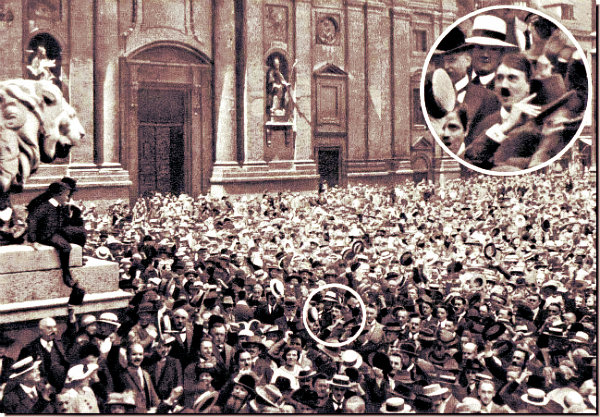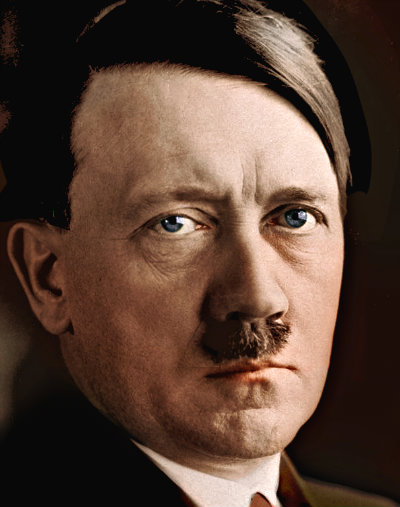
The famous WWI photo showing a much younger version of the notorious German dictator celebrating WWI’s outbreak in Odeonsplatz, Munich, is most likely fake. And it’s all down to the length of his mustache.
August 2, 1914 was the date. The Munich square of Odeonsplatz was filled to the brim. The crow was cheering as a soldier read through the proclamation of Germany declaring war. Among the sea of faces in Odeonsplatz that day was a face of a man not yet familiar that time, but would come to play a huge role in the outbreak of WWII — the infamous German Fuehrer Adolf Hitler. He was among the Odeonsplatz square throng, waving his hat and cheering on. He was 25 years old that time.
A famous photo had captured that moment in Odeonsplatz along with Adolf Hitler. The German dictator later claimed that it was on that day that he, finally, found his life’s purpose.
This famous Odeonsplatz image of a much younger Hitler became famous when it first came out in the propaganda publication German Illustrated Observer in 1932. It was the year that Adolf Hitler ran for presidency. The photo even had this caption: Adolf Hitler, the German patriot, is seen in the middle of the crowd. He stands with blazing eyes – Adolf Hitler.
However, a century after the said photo was captured, claims about the image being fake surface. These accusations state that the Fuehrer was never in that Odeonsplatz crowd.
There are even evidences backing up these allegations. The famous Odeonsplatz photo’s negative was never recovered. Moreover, Hitler couldn’t be spotted in the original newsreel footage after close scrutiny.
Indeed, the length of Adolf Hitler’s mustache in the picture seems to side with its being fabricated. Hitler had preferred a longer beard. Nevertheless, he was compelled to trim it come 1914 for it to fit in the gas mask.
Furthermore, there are also evidences that point out the Odeonsplatz photo was staged between him and his photographer Heinrich Hoffmann (whose assistant, Eva Braun, would later on become Hitler’s long-time mistress and short-time wife). These can be seen in the pages of his autobiography, Mein Kampf, which was published in 1925.
Here, he never mentioned once about his participation in Odeonsplatz that fateful day. He did, however, recounted how he made a petition to the King of Bavaria to allow him, an Austrian, to fight for Germany. But then, he did so in August 3, the next day after the Odeonsplatz event occurred.
It seemed that Hoffman was a master in photo manipulation. And he did everything his master bid him to. According to several experts, inserting a younger image of Hitler in one of the pictures of the Odeonsplatz crowd would have been an easy feat for the photographer.
Meanwhile, the German publication Sueddeutsche Zeitung reported that a number of historians have already expressed their suspicions of the photo’s authenticity. However, they also admit that proving its forgery is as impossible as proving the former.
The publication further went on that with Hitler expressing his desire to enter politics that day and the coming out of the Odeonsplatz photo was just too perfect.
In connection to this, researcher Elizabeth Angermair, who was asked to explain the origin of the image, commented how the picture’s genuineness lied solely on the testimony Hitler gave. Nevertheless, photos of the Odeonsplatz crowd that day found in the archives of the city of Munich never did once show the man with the infamous mustache.
